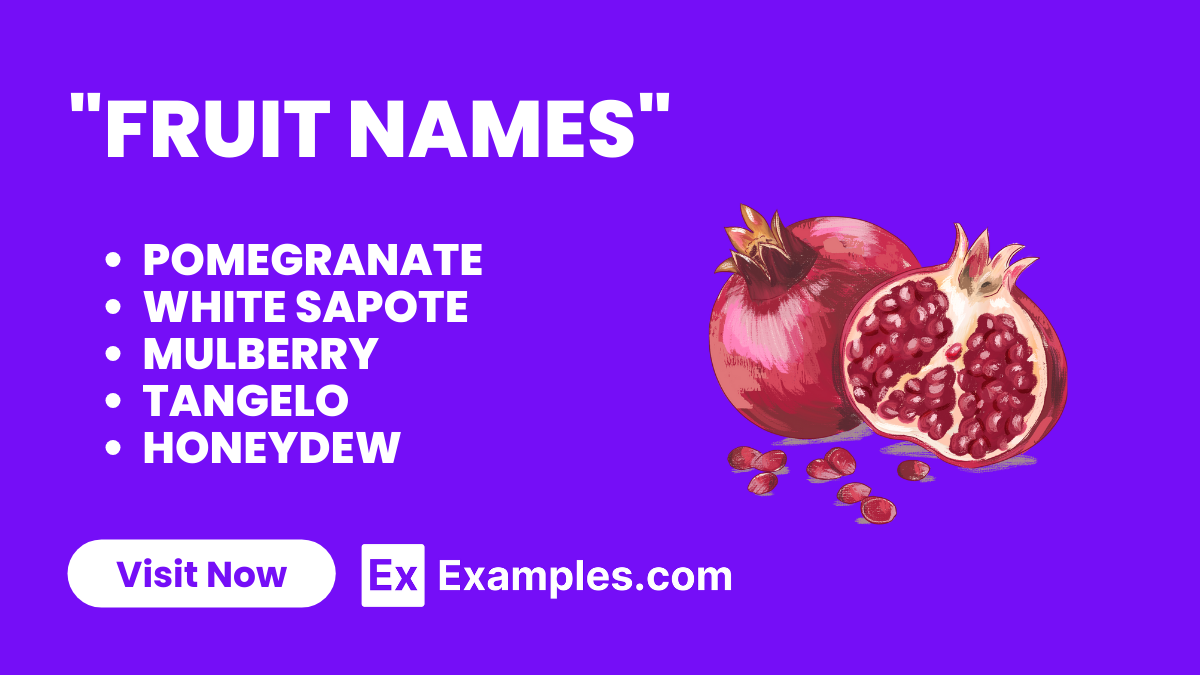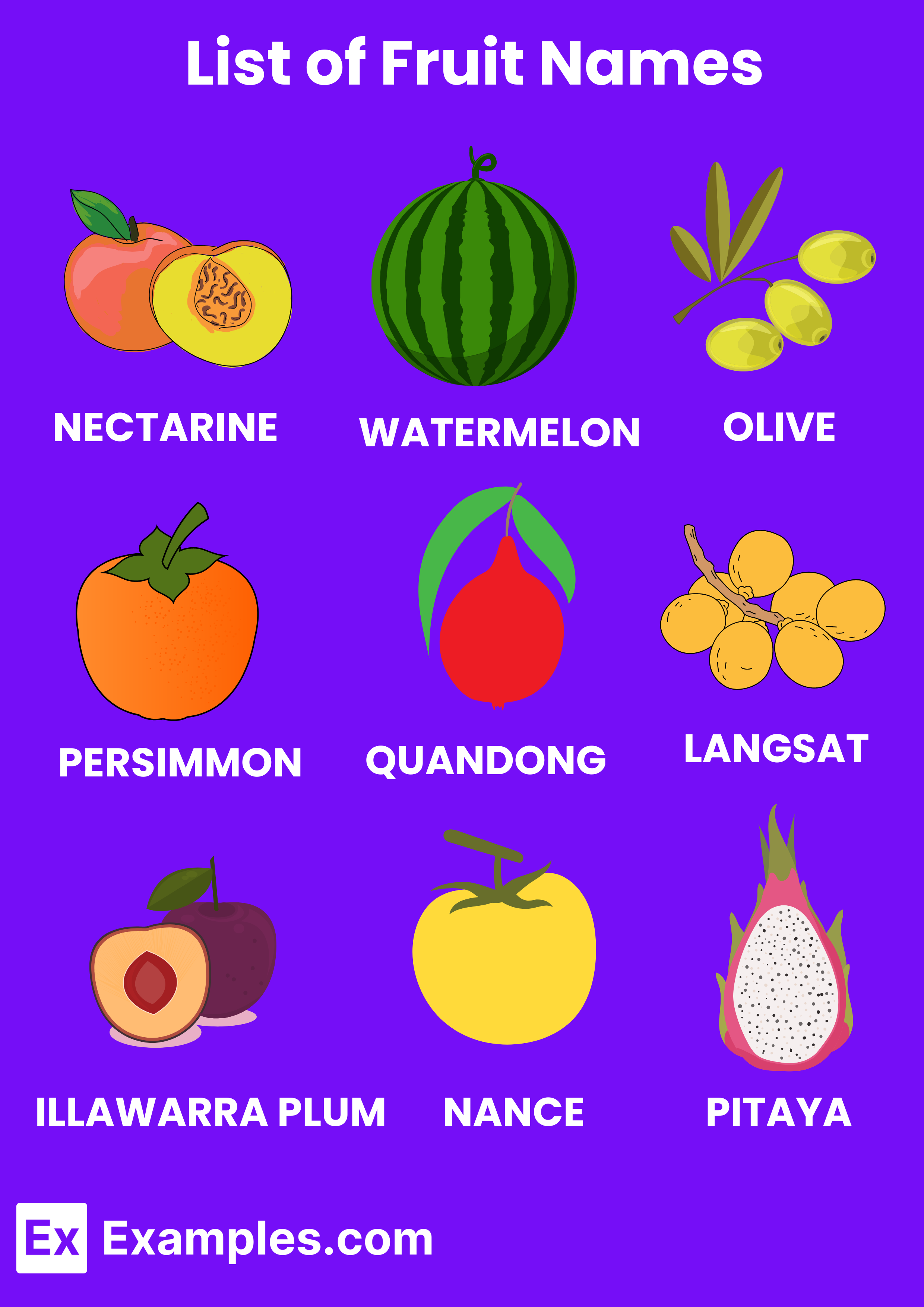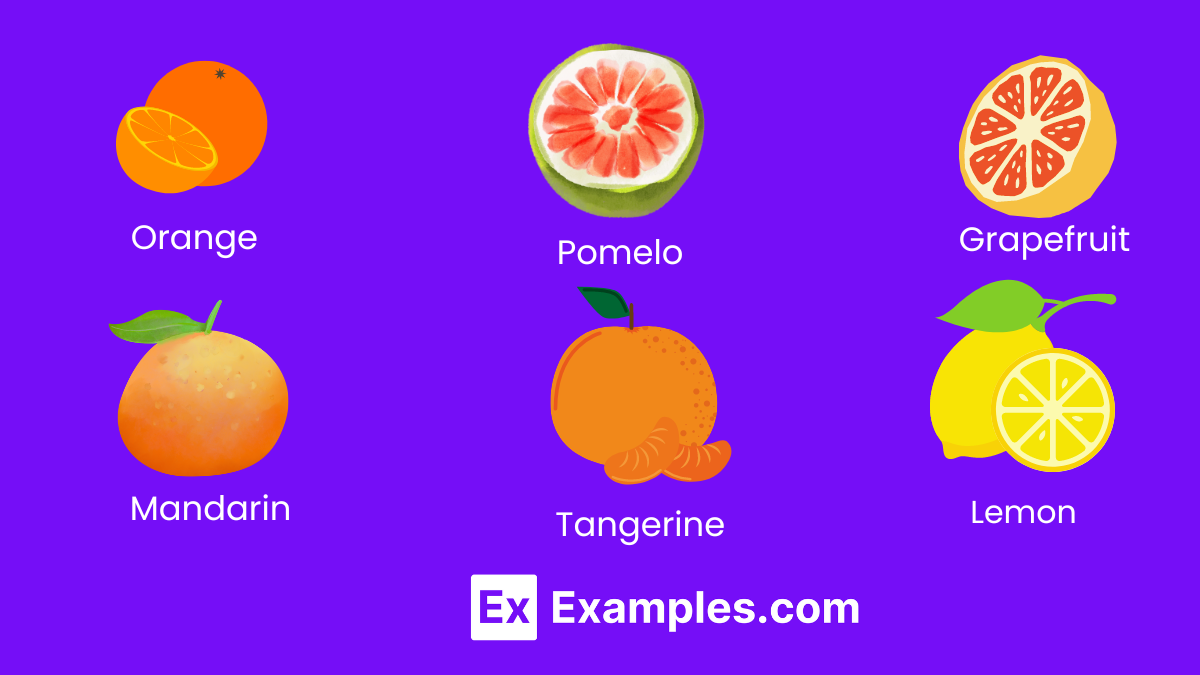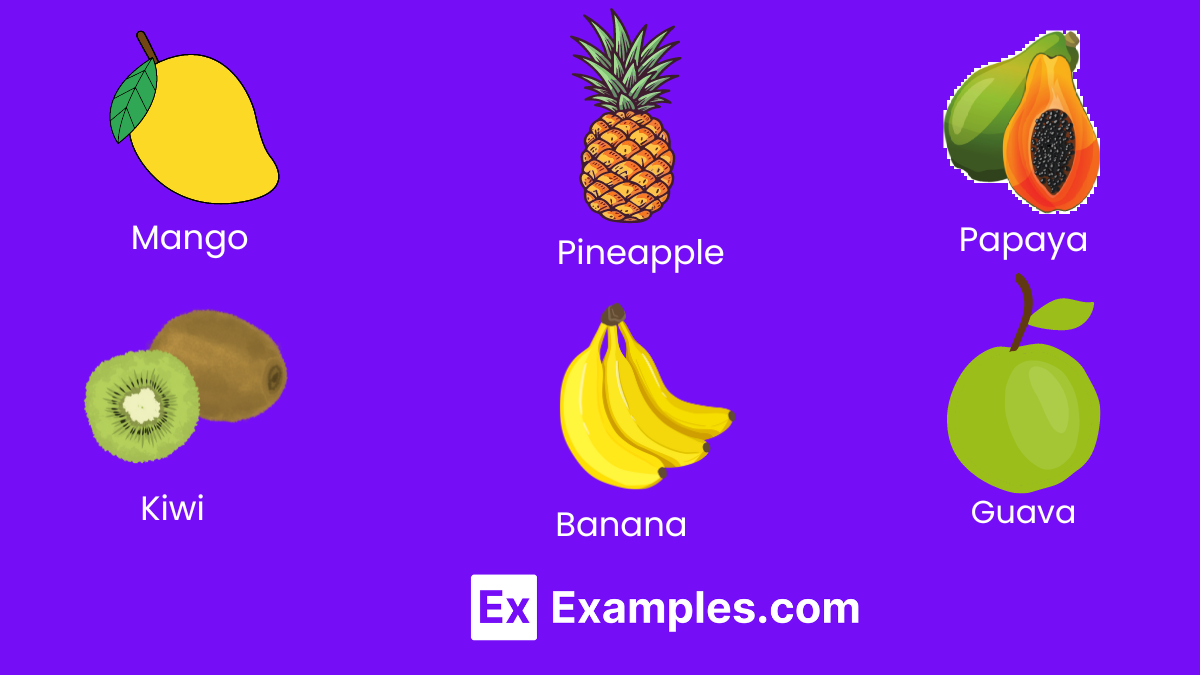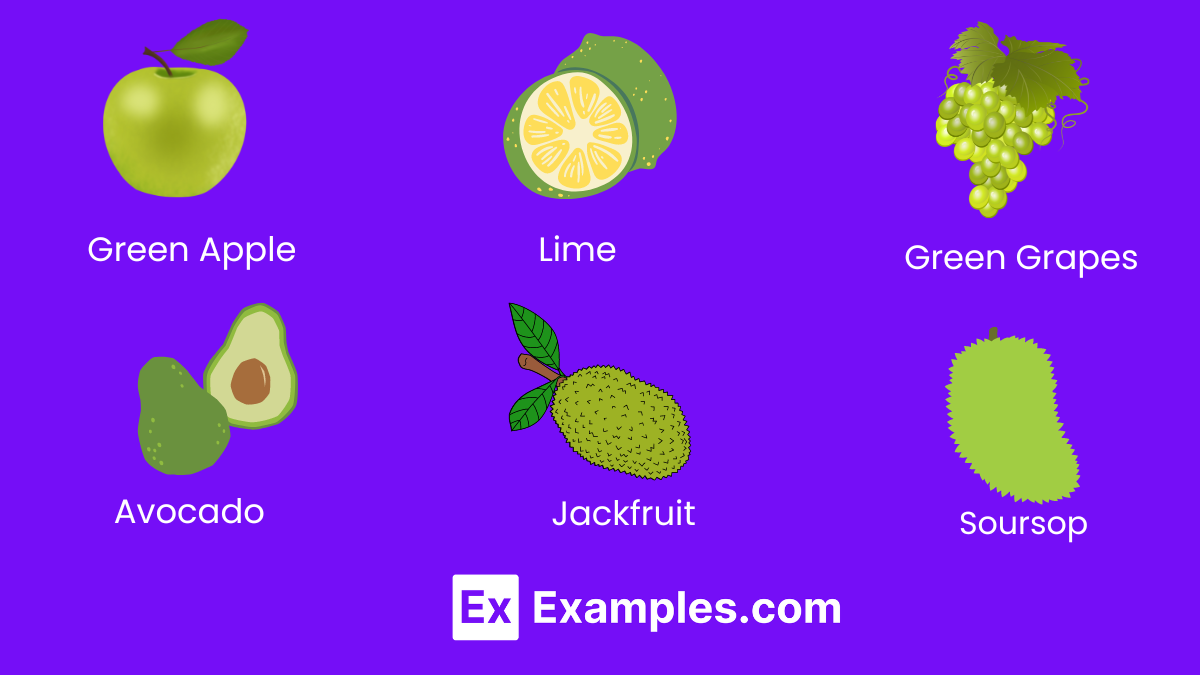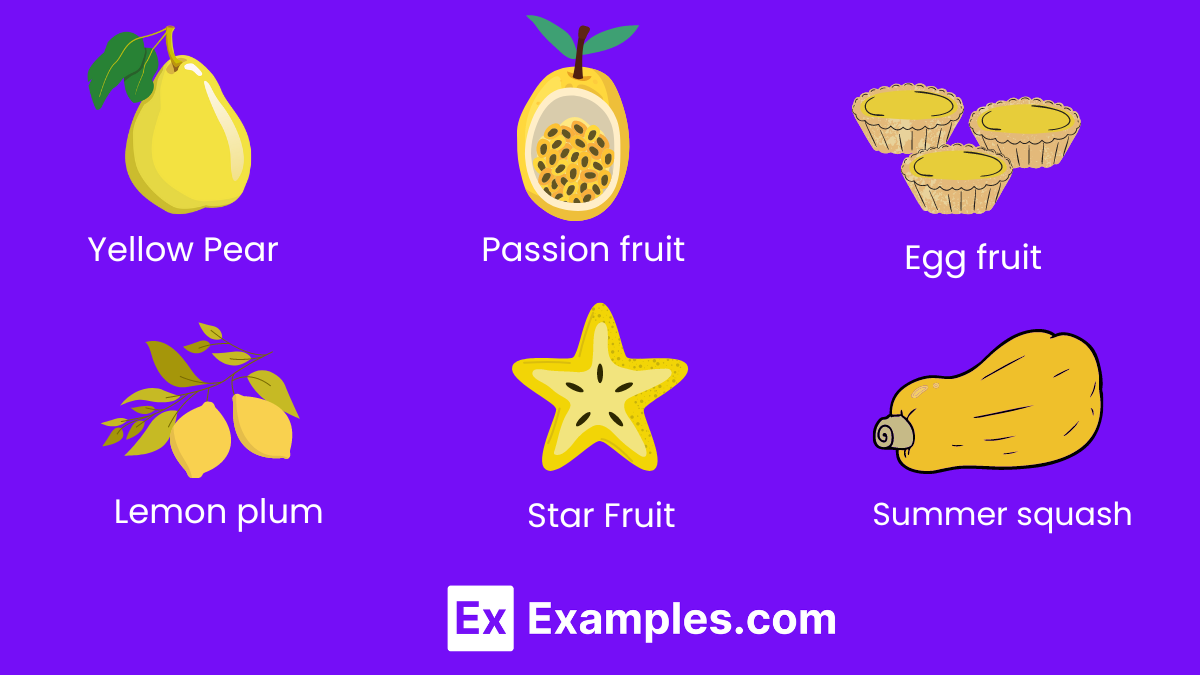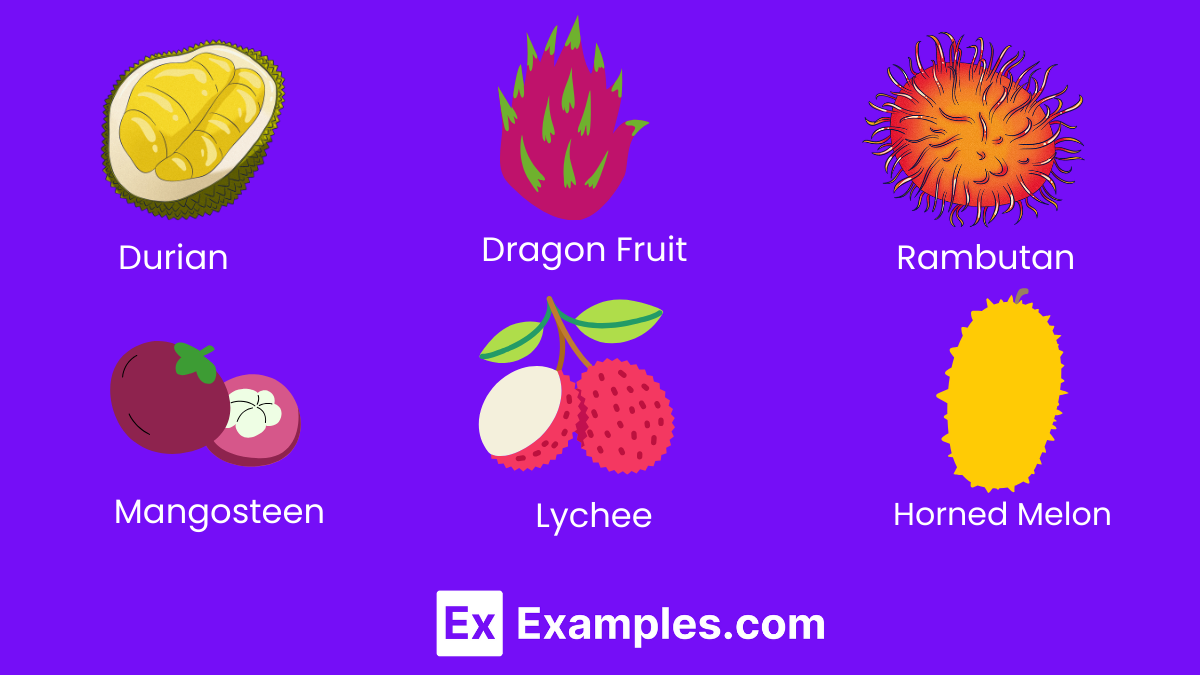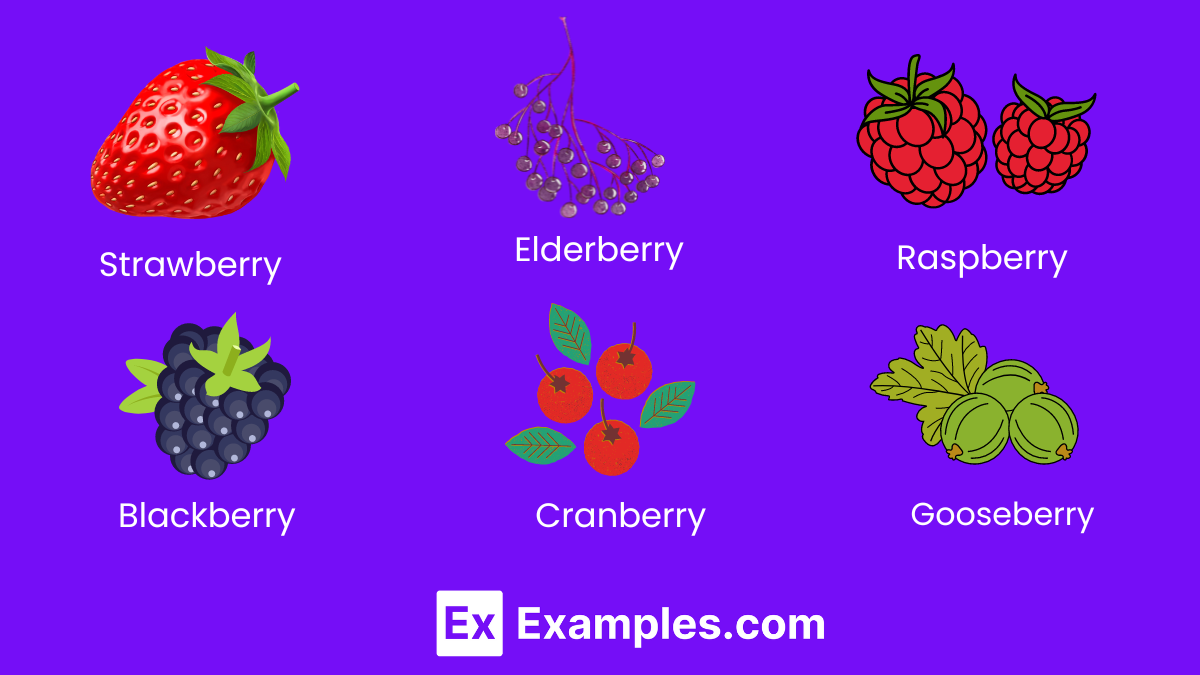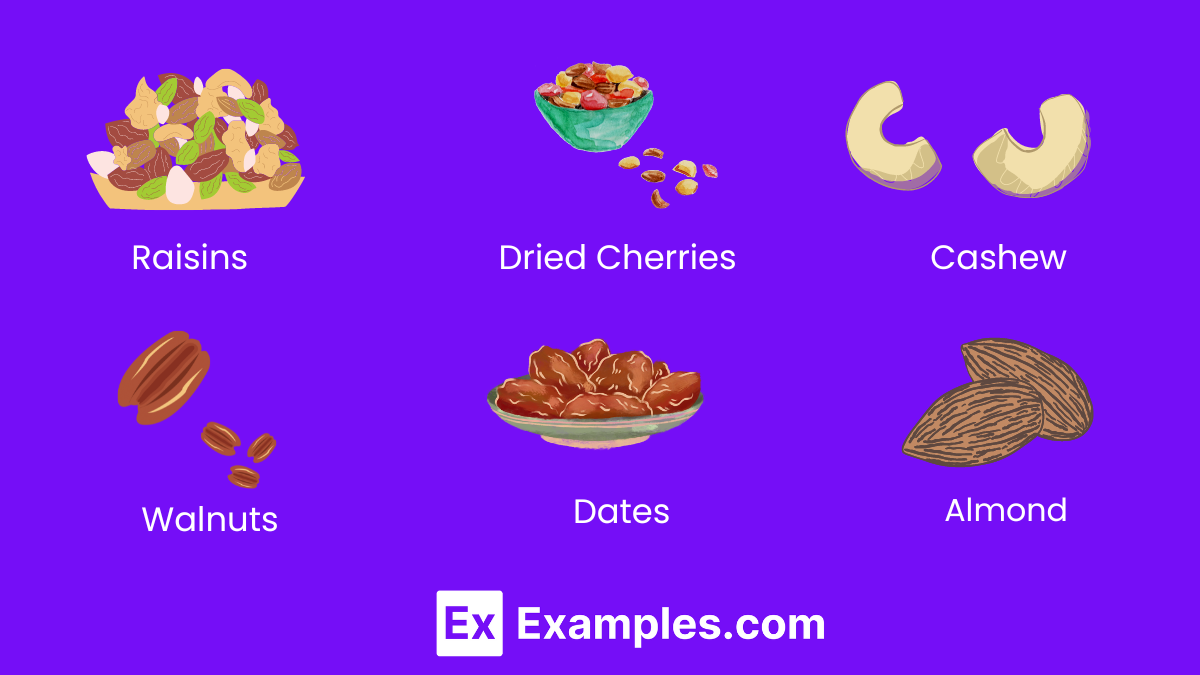100+ Fruit Names: Meaning, Types, Uses, PDF
Dive into the colorful and diverse world of fruits, where each name evokes a unique flavor, texture, and aroma. From the crispness of apples to the tropical sweetness of pineapples, the variety is endless. Understanding fruit names not only enriches our vocabulary but also opens up a universe of culinary possibilities and nutritional benefits. Whether you’re a food enthusiast, a health-conscious individual, or someone exploring the bounties of nature, this guide to fruit names is your gateway to discovery.
Download List of Fruit Names - PDF
List of Fruit Names
Fruits, the edible and often sweet products of trees and plants, are integral to a balanced diet. They are nature’s treat, packed with vitamins, minerals, and fibers, essential for maintaining health and vitality. From the common apple and banana to the more exotic durian and rambutan, fruits come in an astonishing variety of flavors, colors, and textures. They are not just a source of natural sweetness and nutrients but also play a significant role in cultural cuisines and traditions around the world. Including a diverse range of fruits in your diet can enhance your palate, boost your health, and contribute to environmental sustainability by supporting diverse agricultural practices.
| Apple | Banana | Cherry | Date |
| Elderberry | Fig | Grapefruit | Honeydew |
| Indian Plum | Jackfruit | Kiwifruit | Lemon |
| Mango | Nectarine | Orange | Papaya |
| Quince | Raspberry | Strawberry | Tangerine |
| Ugli Fruit | Voavanga | Watermelon | Xigua |
| Yellow Passion Fruit | Zucchini (Fruit) | Apricot | Blackberry |
| Cantaloupe | Dragon Fruit | Elderflower | Feijoa |
| Guava | Huckleberry | Ita Palm | Jaboticaba |
| Kumquat | Lychee | Mulberry | Navel Orange |
| Olive | Persimmon | Quandong | Rambutan |
| Soursop | Tayberry | Uva Rara | Valencia Orange |
| Wax Apple | Yangmei | Zestar Apple | Ambarella |
| Bilimbi | Cempedak | Dewberry | Entawak |
| Finger Lime | Grenadilla | Hala Fruit | Illawarra Plum |
| Jujube | Kabosu | Langsat | Mamoncillo |
| Nance | Otaheite Apple | Pitaya | Queen Anne Cherry |
| Rosella | Starfruit | Tamarillo | Ugni |
| Velvet Apple | White Sapote | Yuzu | Zigzag Vine Fruit |
| Ackee | Blood Orange | Calamondin | Desert Lime |
| Emblica | Forest Strawberry | Goldenberry | Horned Melon |
| Imbe | Jostaberry | Kei Apple | Longan |
| Mabolo | Nashi Pear | Orangelo | Pummelo |
| Quince | Riberry | Salak | Thimbleberry |
| Uva Ursi | Victoria Plum | Wolfberry | Yellow Watermelon |
| Zalzalak | Acerola Cherry | Bael | Chokeberry |
| Durian | Elderberry | French Plantain | Guanabana |
| Honeyberry | Inga Edulis | Jocote | Kaffir Lime |
| Loquat | Miracle Fruit | Naranjilla | Osage Orange |
| Pawpaw | Quince | Rangpur Lime | Saskatoon Berry |
| Tangelo | Umbu | Vanilla Bean | Winter Melon |
| Xoconostle | Yumberry | Zapote | Arctic Raspberry |
Different Types of Fruits
Fruits are nature’s treasure, packed with vitamins, minerals, and antioxidants. They come in various shapes, sizes, colors, and flavors, each with its unique set of nutrients.
- Citrus fruits
- Tropical fruits
- Yellow fruits
- Green fruits
- Exotic and Rare Fruits
- Berries
- Dried Fruits
1. Citrus Fruits
Citrus fruits are vibrant, juicy, and packed with Vitamin C, making them essential for immunity and skin health. They’re known for their tangy taste and aromatic zest, often used in culinary delights. From enhancing flavors in recipes to being a staple in healthy diets, citrus fruits offer versatility and a host of nutritional benefits.
- Orange: A popular, sweet citrus fruit known for its vitamin C content.
- Lemon: A tart fruit often used to add a zesty flavor to dishes and drinks.
- Lime: Similar to lemons, but with a unique green hue and slightly different taste.
- Grapefruit: A larger citrus fruit with a more bitter taste, great for breakfast.
- Mandarin: Smaller and sweeter than oranges, easy to peel and great for snacks.
- Tangerine: Closely related to mandarins, with a deep orange color and sweet flavor.
- Pomelo: The largest citrus fruit, with a sweet and mild taste.
- Clementine: Small and seedless with a sweet flavor, perfect for kids.
- Satsuma: A type of seedless mandarin, known for its soft, easy-to-peel skin.
- Kumquat: A small, oval fruit eaten whole, including the peel, offering a sweet and tart taste.
2. Tropical Fruits
Tropical fruits are exotic, bursting with flavors, and rich in nutrients. They thrive in warm climates and bring a taste of the tropics to your table. Known for their unique appearances and diverse flavors, these fruits are often high in vitamins, antioxidants, and fiber, contributing to a balanced diet and promoting good health.
- Mango: Sweet and juicy, versatile for both sweet and savory dishes.
- Pineapple: Tart and tropical, perfect for juices and tropical-themed dishes.
- Papaya: Soft, sweet flesh with a high vitamin C content.
- Kiwi: Small but mighty, with a bright green flesh and tiny black seeds.
- Banana: A staple fruit, known for its soft texture and sweet taste.
- Coconut: Offers refreshing water and creamy flesh, used in many culinary applications.
- Guava: A sweet fruit with a unique flavor, eaten raw or used in jams.
- Passion Fruit: Small in size but big on tropical flavor, with a juicy, seed-filled center.
- Lychee: Sweet, floral, and fragrant with a juicy, grape-like texture.
- Star Fruit: Distinctive star shape when sliced, with a crisp and slightly tart flavor.
3. Green Fruits
Green fruits are not only visually refreshing but also packed with vitamins, minerals, and fiber. They contribute to a healthy diet with their range of flavors from tart to sweet. Green fruits are often rich in antioxidants, which help in fighting free radicals and improving overall health.
- Green Apple: Crisp and tart, perfect for snacking or baking.
- Kiwi: Bright and tangy, with a unique texture and black seeds.
- Green Grapes: Sweet and juicy, ideal for fresh eating or making wine.
- Lime: Adds a zestful punch to beverages and dishes.
- Green Pear: Juicy and slightly tangy, great for fresh eating.
- Honeydew Melon: Sweet and refreshing, with a soft, pale green flesh.
- Avocado: Creamy and nutrient-dense, a staple in healthy diets.
- Guava: Tropical and sweet, with a hint of tartness.
- Jackfruit: Jackfruit is a tropical fruit with a sweet flavor and a unique texture, often used as a meat substitute in vegan dishes.
- Soursop: Soursop is a tropical fruit known for its spiky green skin and sweet, tangy white flesh, often used in beverages and desserts.
4. Yellow Fruits
Yellow fruits are known for their sunny hues and sweet flavors, making them a favorite across ages. They are rich in vitamins, particularly Vitamin C and A, which are essential for immune function and eye health. These fruits add a bright pop of color and a dose of health to any meal.
- Banana: A versatile fruit, known for its soft texture and sweetness.
- Pineapple: Juicy and tart, perfect for tropical dishes.
- Lemon: Offers a tangy flavor, widely used in culinary arts.
- Yellow Apple: Sweet with a hint of tartness, great for snacks.
- Yellow Pear: Soft and juicy, with a mild sweet flavor.
- Passion fruit: It is a tropical fruit with a vibrant purple or yellow outer skin and juicy, aromatic seeds inside, commonly used in juices, desserts, and cocktails.
- Egg fruit: It also known as canistel, is a tropical fruit with a creamy texture and sweet flavor reminiscent of egg custard, often eaten fresh or used in desserts and smoothies.
- Lemon plum:Lemon plum is a small, yellow fruit with a tangy-sweet flavor, resembling a mix of lemons and plums.
- Star Fruit: Crisp and mildly tart, with an edible skin.
- Summer squash: It is a tender, edible gourd harvested in warmer months, popular in dishes like stir-fries and salads.
5. Exotic and Rare Fruits
Exotic and rare fruits captivate with their unique flavors, vibrant colors, and unusual shapes, offering a taste of the world’s diverse ecosystems. These fruits, often found in tropical and subtropical regions, are packed with vitamins, minerals, and antioxidants. Introducing these fruits into the diet can broaden culinary horizons and provide a boost to health and wellness.
- Durian: Known as the “king of fruits,” with a strong aroma and creamy texture.
- Jackfruit: The largest tree fruit, with a sweet, fibrous interior.
- Dragon Fruit: Striking with its bright pink skin and speckled flesh.
- Rambutan: Hairy exterior with a sweet, juicy inside.
- Star Fruit: Distinct star shape when sliced, with a crisp and juicy taste.
- Mangosteen: Known as the “queen of fruits,” sweet and tangy at the same time.
- Horned Melon (Kiwano): Vibrant orange skin with a jelly-like green interior.
- Lychee: Sweet and floral, with a juicy, grape-like texture inside a rough skin.
- Passion Fruit: Small but packed with a tangy, seedy, and flavorful interior.
- Guava: Tropical and sweet, with edible seeds and high vitamin C content.
6. Berries
Berries are small, juicy, and flavorful fruits, cherished for their high antioxidant content and health benefits. They range from sweet to tart in taste and are versatile in use, perfect for fresh consumption, baking, and preserves. Rich in vitamins, fibers, and phytonutrients, berries support heart health and provide anti-inflammatory properties.
- Strawberry: Bright red and heart-shaped, sweet and fragrant.
- Blueberry: Small and round with a deep blue color, sweet and nutritious.
- Raspberry: Red or black, with a unique, slightly tart flavor.
- Blackberry: Juicy and dark purple, with a sweet and tart taste.
- Cranberry: Tart and bright red, often consumed as juice or dried.
- Gooseberry: Ranges in color, with a tart, slightly grape-like flavor.
- Acai Berry: Deep purple and hailed as a superfood for its antioxidant properties.
- Elderberry: Small, dark berries known for their immune-boosting effects.
- Mulberry: Sweet and slightly tart, resembling elongated blackberries.
- Boysenberry: A cross among several berries, with a deep maroon color and sweet-tart taste.
7. Dried Fruits
Dried fruits are concentrated sources of nutrients and energy, where the water content is removed, leaving behind the fruit’s essence and sweetness. They make for convenient snacks, enrich recipes, and are perfect for adding natural sweetness to a variety of dishes. Rich in fiber, vitamins, and minerals, dried fruits are a healthy addition to any diet.
- Raisins: Dried grapes, sweet and versatile in culinary uses.
- Prunes: Dried plums, known for their digestive benefits.
- Cashew: Cashews are kidney-shaped nuts with a creamy texture and a sweet, buttery flavor, often enjoyed roasted as a snack or used in cooking, baking, and as a topping.
- Walnuts: Walnuts are edible nuts with a hard shell and a rich, earthy flavor, often eaten raw or used in baking, cooking, and as a topping for various dishes.
- Dates: Naturally sweet, often used in baking and desserts.
- Dried Pineapple: Chewy and tart, a tropical treat.
- Dried Mango: Sweet and tangy, with a leathery texture.
- Dried Papaya: Sweet with a slightly musky flavor.
- Dried Cranberries: Often sweetened, tart, and great for baking.
- Almond: Almonds are edible nuts with a smooth, hard shell and a sweet, nutty flavor, commonly eaten raw or used in cooking, baking, and as a garnish.
Benefits of Eating Fruits
Fruits are nature’s sweet gift, offering an array of flavors and textures that delight the palate while nourishing the body. Consuming a variety of fruits can lead to a multitude of health benefits, from improved digestion and immunity to reduced risk of chronic diseases. Their natural sweetness also makes them an excellent alternative to processed snacks and desserts, promoting healthier eating habits.
- Rich Nutritional Profile: Fruits are packed with essential nutrients, including vitamins (such as vitamin C, vitamin A, and folate), minerals (such as potassium and magnesium), and antioxidants that are crucial for maintaining overall health and vitality.
- Boosts Immune System: The vitamins and minerals found in fruits, particularly vitamin C in citrus fruits, play a significant role in strengthening the immune system, helping the body fend off illnesses.
- Promotes Digestive Health: High in dietary fiber, fruits help regulate the digestive system, prevent constipation, and maintain a healthy gut. Fiber also contributes to a feeling of fullness, aiding in weight management.
- Supports Heart Health: Fruits like berries, apples, and citrus contain compounds that have been linked to a reduced risk of heart disease. They help lower blood pressure, reduce cholesterol levels, and improve the health of blood vessels.
- Enhances Skin Health: The antioxidants and vitamins in fruits can contribute to healthy, glowing skin. They help combat the signs of aging and protect the skin from environmental damage.
- Reduces Risk of Chronic Diseases: Regular consumption of fruits has been associated with a lower risk of developing chronic conditions such as heart disease, diabetes, and certain cancers, thanks to their antioxidant properties and nutrient content.
- Aids in Weight Management: Fruits are low in calories and high in water content and fiber, making them an excellent choice for those looking to manage or reduce their weight. They provide a satisfying and nutritious snack option.
- Improves Mental Well-being: The nutrients in fruits can positively affect mental health, reducing symptoms of depression and anxiety and enhancing cognitive function.
- Regulates Blood Sugar Levels: Though fruits contain natural sugars, their high fiber content helps to regulate blood sugar levels, making them safe and beneficial even for individuals with diabetes when consumed in moderation.
- Hydration: Many fruits have a high water content, which helps keep the body hydrated, especially during hot weather or after exercise
Importance of Knowing Fruit Names
Fruits are nature’s bounty, offering a spectrum of flavors, textures, and health benefits. They are integral to diets worldwide, providing essential nutrients that support overall health. Knowing the names and types of fruits enhances our understanding of food sources, encourages healthy eating habits, and connects us with diverse cultures and cuisines.
- Nutritional Awareness: Recognizing fruit names helps individuals make informed choices about their diet and nutrition. Each fruit offers a unique set of vitamins, minerals, and antioxidants, contributing to a balanced and healthful diet.
- Culinary Diversity: Knowledge of various fruits opens up a world of culinary possibilities. It allows for experimentation with different flavors and textures in cooking and baking, enriching the dining experience.
- Cultural Appreciation: Fruits often have cultural significance and are central to various traditions and cuisines. Understanding their names and origins fosters a deeper appreciation of global cultures and culinary practices.
- Gardening and Horticulture: For enthusiasts and professionals in gardening and horticulture, knowing fruit names is fundamental. It aids in the cultivation, care, and harvesting of fruit-bearing plants.
- Educational Value: Teaching children about different fruits and their names is a great way to introduce them to a healthy lifestyle. It expands their vocabulary and instills an early appreciation for nature and nutrition.
- Environmental Consciousness: Recognizing fruit names can also promote awareness of seasonal and local produce, encouraging more sustainable eating habits by choosing fruits that are in season and locally available.
- Health and Wellness: Understanding what each fruit offers can guide individuals toward making choices that support their health goals, whether it’s boosting immunity, improving digestion, or managing weight.
- Social Interactions: Food often serves as a bridge between people, and knowledge of fruits can enhance social interactions, whether it’s discussing recipes, sharing fruit-based dishes, or exploring food markets together.
- Adventure and Exploration: For the adventurous eater, knowing fruit names is the first step toward exploring exotic and rare fruits, expanding one’s palate, and enjoying new taste experiences.
- Preservation of Biodiversity: Awareness and interest in different fruits can also contribute to the conservation of fruit varieties and biodiversity, supporting efforts to preserve rare and endangered species.
Various nutrients provided by the Fruits and their uses in the body
| Fruit Name | Nutrient | Uses in the Body |
|---|---|---|
| Apple | Fiber | Aids in digestion, helps maintain healthy weight. |
| Banana | Potassium | Regulates blood pressure, supports heart health. |
| Orange | Vitamin C | Supports immune system, promotes healthy skin. |
| Blueberry | Antioxidants | Protects cells from damage, supports brain health. |
| Kiwi | Vitamin K | Aids in blood clotting, supports bone health. |
| Pineapple | Bromelain | Aids in digestion, reduces inflammation. |
| Avocado | Healthy Fats | Supports heart health, aids in nutrient absorption. |
| Strawberry | Folate | Supports fetal development, aids in red blood cell formation. |
| Watermelon | Lycopene | Supports heart health, may reduce risk of certain cancers. |
| Papaya | Papain | Aids in digestion, promotes wound healing. |
Effective ways to include Fruits in your diet
Incorporating fruits into your diet is a delicious and nutritious way to enhance your overall health. Fruits are packed with essential vitamins, minerals, antioxidants, and fiber, which can aid in digestion, improve heart health, boost the immune system, and contribute to a healthy weight. Here are some effective ways to include more fruits in your daily eating habits:
- Start Your Day with Fruits: Begin your mornings with a fruit-based breakfast. Add slices of banana or berries to your cereal, oatmeal, or yogurt to kickstart your day with a nutritious boost.
- Snack on Fruits: Replace processed snacks with fresh fruits. Keep portable fruits like apples, oranges, or grapes handy for a quick and healthy snack option.
- Fruit Smoothies: Blend a mix of your favorite fruits with yogurt or milk for a refreshing and healthy smoothie. It’s a great way to consume multiple servings of fruits in one go.
- Fruit Salads: Prepare a colorful fruit salad as a side dish for meals or as a light dessert. Mix various fruits to enjoy a range of flavors and nutrients.
- Add Fruits to Salads: Incorporate diced fruits like apples, pears, or citrus segments into your green salads for an added sweet and tangy flavor.
- Use Fruits in Cooking: Experiment with adding fruits to your main dishes. For example, pineapple in stir-fries, apricots in chicken dishes, or mango in salsas can enhance the taste and nutritional value of your meals.
- Fruit-Based Desserts: Opt for desserts that are fruit-focused, such as baked apples, fruit tarts, or fresh fruit popsicles, to satisfy your sweet tooth in a healthier way.
- Keep Fruits Visible: Store fruits in visible spots like the center shelf of your fridge or on the kitchen counter. You’re more likely to eat them if they’re in plain sight.
- Try Exotic Fruits: Keep your fruit intake interesting by trying exotic or unfamiliar fruits when they’re in season. This can add variety to your diet and may introduce you to new favorites.
- Dried Fruits: In moderation, dried fruits can be a good option for adding fruits to your diet, especially when fresh fruits aren’t available. Just be mindful of the sugar content.
Recommended servings of Fruits for each age group
| Age Group | Recommended Servings of Fruits per Day |
|---|---|
| Toddlers (1-3 years) | 1 cup |
| Children (4-8 years) | 1 to 1½ cups |
| Boys (9-13 years) | 1½ cups |
| Girls (9-13 years) | 1½ cups |
| Teen Boys (14-18 years) | 2 cups |
| Teen Girls (14-18 years) | 1½ cups |
| Men (19-50 years) | 2 cups |
| Women (19-50 years) | 1½ cups |
| Men (51+ years) | 2 cups |
| Women (51+ years) | 1½ cups |
List of Fruits Names starting with A-Z
Fruits Starting with A
| Apple | Apricot |
| Avocado | Acai Berry |
| Acerola | Ackee |
| Asian Pear | Ambarella |
| Almond (fruit part) | Aronia Berry |
Fruits Starting with B
| Banana | Blueberry |
| Blackberry | Boysenberry |
| Breadfruit | Bilberry |
| Blackcurrant | Barbados Cherry |
| Bergamot Orange | Burahemato |
Fruits Starting with C
| Cherry | Cantaloupe |
| Clementine | Coconut |
| Cranberry | Custard Apple |
| Calamondin | Chico fruit |
| Cloudberry | Currant |
Fruits Starting with D
| Date | Dragon Fruit |
| Durian | Damson |
| Dewberry | Desert Lime |
| Double Coconut | Duku |
| Davidson’s Plum | Dead Man’s Fingers |
Fruits Starting with E
| Elderberry | Eggfruit |
| Emu Apple | Entawak |
| Etrog | Elephant Apple |
| Earthnut Pea | Ecuadorian Raspberry |
| Emblic | European Pear |
Fruits Starting with F
| Fig | Feijoa |
| Finger Lime | Fuji Apple |
| Florida Strangler Fig | False Mastic |
| French Plantain | Fazli Mango |
| Forest Strawberries | Fibrous Satinash |
Fruits Starting with G
| Grape | Guava |
| Grapefruit | Gooseberry |
| Galia Melon | Golden Apple |
| Granadilla | Guinep |
| Greengage | Genipap |
Fruits Starting with H
| Honeydew | Huckleberry |
| Hackberry | Hardy Kiwi |
| Horned Melon | Hog Plum |
| Hapil | Hawthorn |
| Honeycrisp Apple | Huito |
Fruits Starting with I
| Indian Fig | Illawarra Plum |
| Imbe | Indonesian Lime |
| Indian Almond | Ice Cream Bean |
| Indian Gooseberry | Ita Palm |
| Icaco | Ivy Gourd |
Fruits Starting with J
| Jackfruit | Jujube |
| Jaboticaba | Japanese Persimmon |
| Jambolan | Jelly Palm Fruit |
| Juneberry | Java Apple |
| Jostaberry | Juniper Berry |
Fruits Starting with K
| Kiwi | Kumquat |
| Kiwano | Kaffir Lime |
| Kakadu Plum | Kent Mango |
| Karonda | Kei Apple |
| Kalamansi | Kwai Muk |
Fruits Starting with L
| Lemon | Lychee |
| Lime | Longan |
| Loquat | Langsat |
| Lúcuma | Loganberry |
| Lady Apple | Lemon Guava |
Fruits Starting with M
| Mango | Melon |
| Mandarin | Mulberry |
| Macadamia Nut (fruit part) | Maracuya |
| Mamey Sapote | Miracle Fruit |
| Mangosteen | Monstera Deliciosa |
Fruits Starting with N
| Nectarine | Navel Orange |
|---|---|
| Nashi Pear | Naseberry |
| Noni | Nutmeg (fruit part) |
| Naranjilla | Neem |
| Natal Plum | Nikau |
Fruits Starting with O
| Orange | Olive |
| Ogen Melon | Osage Orange |
| Ortanique | Oval Kumquat |
| Oroblanco | Otaheite Apple |
| Oyster Nut | Okari Nut |
Fruits Starting with P
| Pineapple | Papaya |
| Peach | Plum |
| Pomegranate | Pear |
| Persimmon | Passion Fruit |
| Pomelo | Prickly Pear |
Fruits Starting with Q
| Quince | Queen Anne Cherry |
| Quandong | Querina Apple |
| Queensland Nut | Quetsch |
| Quinault Strawberry | Queen of the Night |
| Quinine Fruit | Quinoa (seed technically a fruit) |
Fruits Starting with R
| Raspberry | Rambutan |
| Red Currant | Rose Apple |
| Rhubarb (vegetable, but often treated as a fruit) | Riberry |
| Rollinia | Romanesco |
| Rangpur Lime | Roselle |
Fruits Starting with S
| Strawberry | Starfruit |
| Sapote | Satsuma |
| Sugar Apple | Salak |
| Soursop | Sweet Cherry |
| Shaddock | Spanish Lime |
Fruits Starting with T
| Tangerine | Tomato |
| Tayberry | Tamarind |
| Thimbleberry | Turmeric (root, but often treated as fruit/vegetable) |
| Tangelo | Tangor |
| Texas Persimmon | Tropical Apricot |
Fruits Starting with U
| Ugli Fruit | Uva Rara |
| Ububese Fruit | Umeboshi Plum |
| Ukrainian Melon | Ugni |
| Uva-Crispa | Uvalha |
| Umbu | Uchuva |
Fruits Starting with V
| Vanilla (the pod is the fruit) | Velvet Apple |
| Voavanga | Vitelotte (potato, but treated as a fruit in some cultures) |
| Valencia Orange | Vavilov’s Apple |
| Velvet Tamarind | Victoria Plum |
| Vine Peach | Velvet Mesquite |
Fruits Starting with W
| Watermelon | Wolfberry |
| White Sapote | Wax Apple |
| Wild Grape | Wineberry |
| Water Apple | Whortleberry |
| White Currant | West Indian Gherkin |
Fruits Starting with X
| Xigua (Chinese Watermelon) | Ximenia |
| Xoconostle (sour prickly pear) | Xiang Jiao (Banana in Mandarin) |
| Xia He Tao (Walnut in Mandarin) | Xian Li (Pear in Mandarin) |
| Xanthoceras Sorbifolium | Xinjiang Pear |
Fruits Starting with Y
| Yellow Watermelon | Yuzu |
| Youngberry | Yacon (root, often treated as a fruit) |
| Yellow Passion Fruit | Yantok (Rattan Fruit) |
| Yangmei (Chinese Bayberry) | Yali Pear |
| Yumberry (Red Bayberry) | Yellow Dragon Fruit |
Fruits Starting with Z
| Zucchini (Courgette) | Zapote |
| Zestar Apple | Zalzalak |
| Ziziphus (Jujube) | Zigzag Vine Fruit |
| Zebra Melon | Zalacca |
| Zenji Berry | Zinfandel Grape |
Which fruits are high in potassium?
Potassium is an essential mineral that plays a vital role in maintaining several bodily functions, including fluid balance, nerve signals, and muscle contractions. Consuming fruits high in potassium can help regulate blood pressure, reduce the risk of stroke, and prevent osteoporosis and kidney stones. Here are some fruits known for their high potassium content
- Bananas: One of the most well-known sources, bananas are not only rich in potassium but also provide quick energy, making them a favorite among athletes.
- Oranges: A single medium orange can deliver a significant amount of potassium, along with a healthy dose of vitamin C.
- Avocados: Beyond their heart-healthy fats, avocados are a great source of potassium, with one whole avocado providing even more potassium than a banana.
- Cantaloupes: This sweet melon is not only hydrating but also packed with potassium, making it perfect for a potassium boost.
- Dried Apricots: A nutrient-dense snack, dried apricots offer a concentrated source of potassium, along with fiber and antioxidants.
- Kiwi: This small fruit packs a punch in terms of potassium content, and it’s also rich in vitamin C and dietary fiber.
- Prunes and Prune Juice: Known for aiding digestion, prunes and their juice are also excellent sources of potassium.
- Pomegranates: These juicy seeds are not only packed with antioxidants but also contain a good amount of potassium.
- Coconut Water: A refreshing beverage, coconut water is a natural electrolyte-rich drink with high levels of potassium.
- Sweet Potatoes: While not a fruit, sweet potatoes are worth mentioning for their high potassium content, contributing to a balanced diet when paired with fruit.
In conclusion, exploring the vast array of fruit names from A to Z not only enriches our vocabulary but also opens up a world of nutritional benefits and culinary possibilities. From the common apple to the exotic zapote, each fruit offers unique flavors and health benefits, making them essential components of a balanced diet and a vibrant culinary experience.


